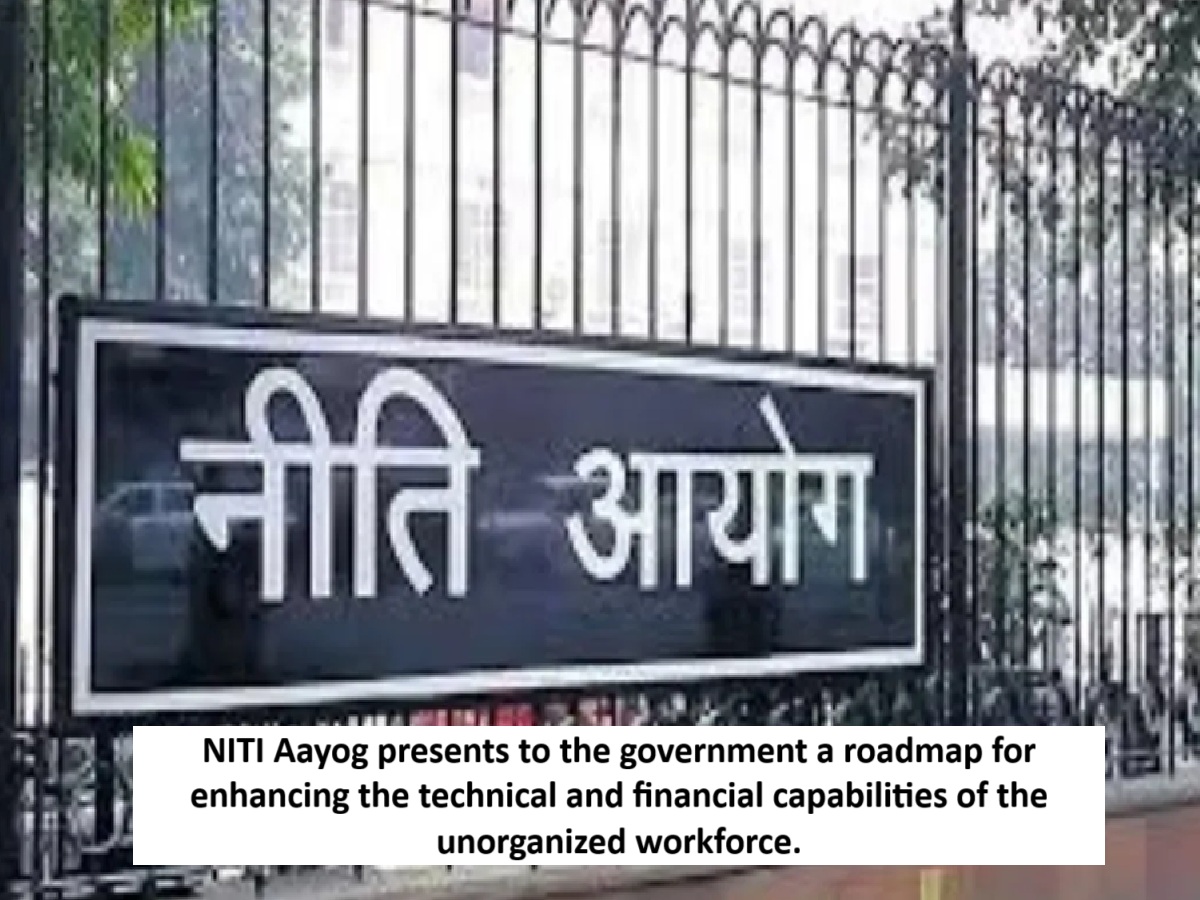
News Topical, Digital Desk : In the era of artificial intelligence, there's constant debate about the potential losses and benefits for professionals. Meanwhile, NITI Aayog has turned its attention to the unorganized sector, which accounts for 90 percent of the workforce and contributes approximately 50 percent to gross domestic product (GDP).
The Commission's experts believe that if this sector is provided with technical support, including AI, these approximately 490 million unorganized workers can become the backbone of the economy and a growth engine for a developed India. Along with the proposal for a national mission called Digital Shram Setu, the Commission has also submitted a roadmap to the central government, identifying the year 2035 as a key milestone for capacity building.
In a roadmap titled "AI for Inclusive Societal Development," NITI Aayog CEO BVR Subrahmanyam clearly stated that despite their significant role in sectors such as construction, textiles, food services, care, and handicrafts, unorganized sector workers continue to work in insecure environments with low productivity. AI and other technologies can fully unleash the potential of India's unorganized trade workforce and transform them into a vital cog in a developed India, provided they are implemented thoughtfully and inclusively.
The Commission has identified five key challenges facing the unorganized sector: financial insecurity, limited market access, lack of skills, inadequate social protection, and low productivity. These challenges are preventing the sector from realizing its full potential. The roadmap discusses how the use of technologies such as AI, the Internet of Things, blockchain, robotics, and immersive learning can address the barriers faced by India's unorganized workforce.
Steps such as implementing worker-centric data protection are suggested.
To realize this vision, NITI Aayog has proposed a national mission called Digital Shram Setu in its roadmap to the government. This mission emphasizes mobilizing stakeholders from government, industry, and society. Suggested steps include developing a charter for implementation, establishing a separate nodal body, promoting local research, development, and manufacturing of devices under Make in India, and implementing worker-centric data protection measures under the Digital Personal Data Protection Act.
It also stated that states should launch mission-mode programs for businesses in the unorganized sector. At the same time, a top-level executive body for this mission is proposed to be chaired by the Prime Minister, with representation from key ministries, departments, and stakeholders, including the Ministry of Labor and Employment, the Ministry of Skill Development, and Entrepreneurship.
The Commission has set target points for capacity enhancement.
Current Status- Target for 2035- Target for 2047 Per Capita Income- Rs 159545- Rs 487467- Rs 1285243 Women Participation- 15 percent- 25 percent- 42 percent Social Security Coverage- 48 percent- 80 percent- 100 percent Productivity- Rs 443.19 per hour- Rs 1329.56 per hour- Rs 4343.24 per hour.
Read More: NDA cadet dies under suspicious circumstances in Pune; body found hanging in hostel room
--Advertisement--

 Share
Share



